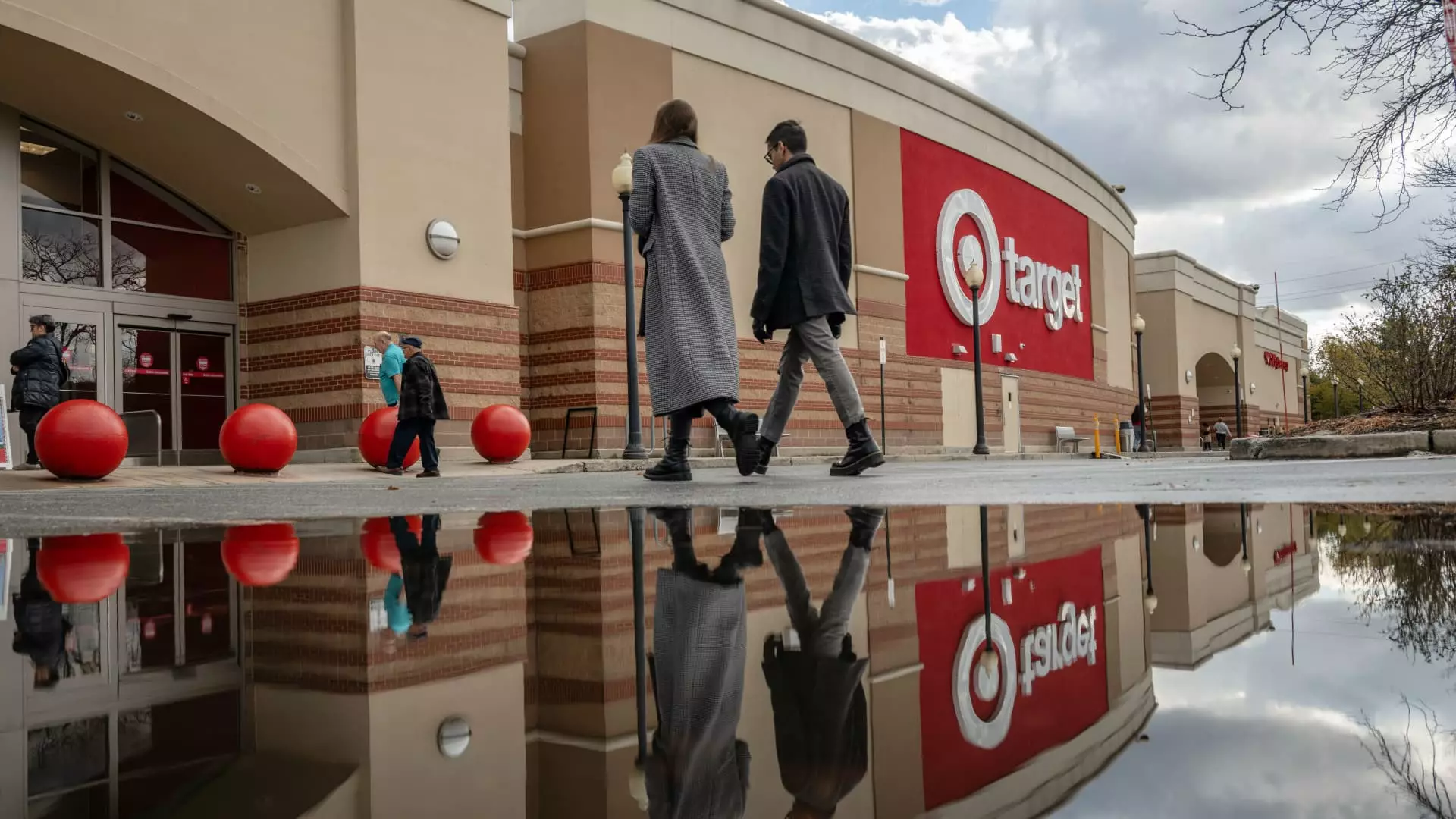As the holiday shopping season approaches, retailers are bracing themselves for an unpredictable consumer landscape. The enthusiasm of eager shoppers, often fueled by the season’s spirit, contrasts sharply with the realities facing various brands. While some chains flourish by effectively capturing customer interest, others struggle under the weight of disappointing sales figures. The divergent earnings reports recently released have underscored an almost dramatic rift among retailers: while giants like Walmart and Dick’s Sporting Goods celebrate solid performances, others, including Target and Kohl’s, find themselves grappling with underwhelming results.
The aftermath of a prolonged inflationary environment continues to shape consumer behavior, causing shoppers to be more judicious about their expenditures. As retailers plan their promotional strategies, they must contend with consumers who are less inclined to indulge in superfluous purchases. Neil Saunders, managing director at GlobalData Retail, encapsulated this sentiment, indicating that shoppers are still eager to spend but are restricting the quantity of their purchases. The dynamics of consumer behavior indicate that shoppers are now prioritizing their spending, making it crucial for retailers to distinguish themselves in a crowded marketplace.
Post-pandemic recovery has revealed a nuanced economic landscape. Even as inflation shows signs of moderation, it has left an indelible mark on consumer habits. The juxtaposition of reduced inflation with persistent elevated costs across necessities necessitates a strategic re-evaluation by retailers. While consumers might court brands they view as high value or relevant, discretionary items—including apparel, beauty products, and holiday-themed goods—are markedly vulnerable.
According to the National Retail Federation, holiday spending is projected to climb, albeit at a tepid rate of 2.5% to 3.5%, totaling nearly $990 billion. This statistic illustrates a shift from the previous year’s growth, prompting retailers to rethink their sales forecasts. Certain stores, like Abercrombie & Fitch, have presented optimistic outlooks for the season, buoyed by early positive responses to their holiday assortments—a stark contrast to companies like Nordstrom and Walmart, which strike a more cautious tone regarding consumer sentiment and purchasing readiness.
In this rather uneven competitiveness, retailers have employed various strategies in a bid to capture consumer attention and transactions. For instance, Target is not shying away from creative collaborations, rolling out an impressive assortment of products tied to popular culture, such as Limited Edition merchandise linked to Universal’s “Wicked” and exclusive items for Taylor Swift enthusiasts. These moves signal an awareness of the contemporary consumer’s interests, although the effectiveness of such initiatives in driving sales remains to be seen.
Conversely, the situation at Kohl’s appears more tenuous, with management announcing a revised forecast that anticipates a steeper decline in sales. Additionally, the move to change leadership at such a critical juncture raises questions about the company’s strategic direction. Retail analysts, including GlobalData’s Saunders, observe that stores catering more to discretionary spending might be challenging to navigate this holiday season; aiming for experiential gifts that demonstrate practical value may be paramount for consumers during this period.
The retail industry is in a transformative phase where consumer preferences are shifting dramatically. People are increasingly valuing the significance and sustainability of their purchases. As the demand for useful and relevant gifts rises, retailers must adapt by offering products that stray from traditional, impulse-driven sales tactics. Novelty items, often dismissed as “stupid games or unnecessary trinkets,” are now likely to see reduced interest. Shoppers appear to be motivated not just by price but by the perceived worth of their purchases.
In navigating this complex retail landscape, some companies may find themselves burdened with excess or inappropriate inventory choices. The apprehension surrounding items such as clothing and kitchen gadgets—especially in sectors where foot traffic remains subdued—raises concerns. If enthusiasm for shopping does not materialize, excess inventory could lead to significant markdowns post-holiday season, further complicating retailers’ financial diagnostics.
As the holiday season unfolds, a critical component of success lies in the ability to provide value. Esteemed market analyst Marshal Cohen emphasizes that blending affordability with perceived quality and relevance of products may be vital in securing sales. Retailers, however, often pave pathways for potential challenges by projecting external factors—weather issues, logistical delays, or supply chain interruptions—as scapegoats for underperformance.
In retrospect, the strategies that retailers choose to implement this season will significantly influence not just their immediate holiday performance but also their long-term viability in a retrospective complaint against an evolving consumer base. Shoppers may be poised for a return to retail excitement, but their fidelity will depend on whether their needs are sincerely valued, understood, and catered to—not merely counted as statistics on a balance sheet. As the season progresses, the resilience and adaptability of brands will ultimately determine who thrives in this complex ecosystem.

